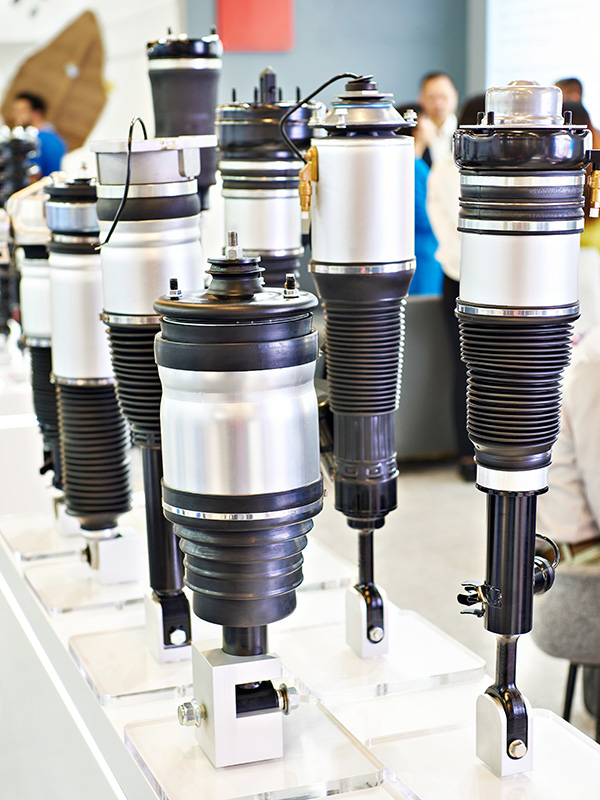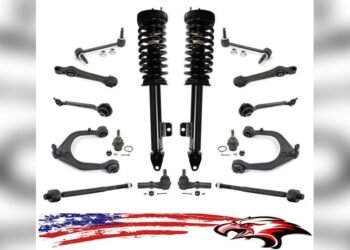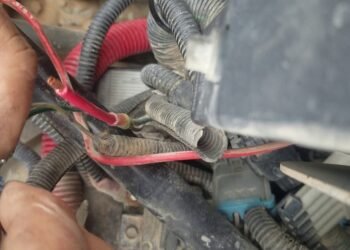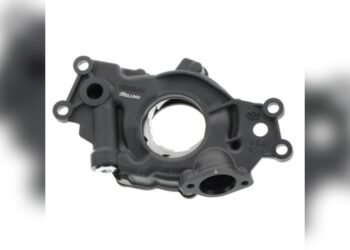If you own a Mercedes, you know how smooth and comfortable the ride feels—thanks in large part to its advanced air suspension system. But what happens when your Mercedes air suspension starts acting up?
Sudden sagging, strange noises, or warning lights can quickly turn your luxury driving experience into a source of frustration. You might wonder what’s causing these problems and how to fix them without breaking the bank. You’ll discover the most common Mercedes air suspension problems, easy ways to diagnose them, and practical tips to get your ride back to its perfect level.
Keep reading to protect your investment and enjoy that signature smooth drive again.

Credit: www.mbclinic.com
Common Air Suspension Issues
Mercedes air suspension systems offer a smooth ride and adjustable height. Still, they face common issues that affect performance. Understanding these problems helps with timely repairs and maintenance. Below are the frequent air suspension problems found in Mercedes vehicles.
Air Spring Leaks
Air springs can develop leaks due to wear or damage. Leaks cause the suspension to lose air pressure. This results in a sagging or uneven ride height. Detecting leaks early prevents further suspension damage.
Compressor Failures
The compressor pumps air into the suspension system. Over time, compressors may fail due to overuse or electrical faults. A broken compressor causes the suspension to drop or not adjust properly. Replacing a faulty compressor restores normal function.
Sensor Malfunctions
Sensors monitor ride height and road conditions. Faulty sensors send wrong signals to the control unit. This leads to incorrect suspension adjustments or warning lights. Calibrating or replacing sensors fixes these errors.
Valve Block Problems
The valve block controls air flow to each air spring. Valve block issues can block or leak air. This causes poor suspension response or uneven ride height. Cleaning or replacing the valve block often resolves these problems.
Electrical Faults
Electrical faults disrupt signals between components. Wiring issues or blown fuses can stop the system from working. Diagnosing electrical faults requires checking connections and components. Repairing wiring or replacing fuses restores system operation.
Symptoms Of Suspension Problems
Recognizing symptoms of Mercedes air suspension problems early helps avoid costly repairs. Air suspension issues impact ride quality and vehicle safety. Watch for signs that point to faulty suspension components. These symptoms often indicate the need for inspection or repair. Understanding them keeps your Mercedes driving smoothly and safely.
Uneven Ride Height
The vehicle sits higher or lower on one side. Uneven ride height shows air springs may be leaking. One corner may sag while others stay normal. This makes the car look tilted or unbalanced. It also affects handling and tire wear.
Warning Lights And Error Codes
The dashboard may show suspension warning lights. Error codes appear in the vehicle’s computer system. These signals indicate problems with the air suspension system. A diagnostic scan tool can identify specific faults. Ignoring these warnings risks further damage.
Noisy Compressor Operation
The air compressor sounds louder or runs longer than usual. Strange noises like grinding or clicking may come from the compressor. This often means the compressor is overworking or failing. It tries to maintain pressure in leaking air springs or lines. A noisy compressor needs quick attention.
Rough Or Bumpy Ride
The ride feels harsh or less smooth than before. Air suspension is meant to absorb shocks and bumps. If it fails, you feel every road imperfection. This roughness reduces comfort and can strain other suspension parts. Pay attention to changes in ride quality.
Vehicle Sagging Or Drooping
The car sinks lower than normal, especially when parked. Sagging shows air suspension is losing pressure or failing completely. Sometimes the vehicle sits close to the ground on one or both sides. This problem limits ground clearance and can cause damage. It signals urgent repair needs.
Diagnosing Air Suspension Faults
Diagnosing air suspension faults in a Mercedes requires careful steps. Identifying the root cause helps avoid costly repairs. This section guides through key checks and tests for accurate diagnosis.
Visual Inspection Of Components
Start by visually inspecting the air suspension parts. Look for cracks or damage on air springs and lines. Check the compressor for signs of wear or leaks. Loose or broken connections can cause faults. Clean dirt or debris may hide issues. Ensure all components are securely mounted and intact.
Using Diagnostic Tools
Use a diagnostic scanner compatible with Mercedes systems. Connect it to the vehicle’s OBD port. Read stored fault codes related to air suspension. Codes help pinpoint failing sensors or valves. Some tools allow live data viewing for deeper analysis. Follow tool instructions for accurate results.
Checking For Air Leaks
Listen for hissing sounds near air springs and valves. Spray soapy water on air lines and joints. Bubbles indicate leaks in the system. Even small leaks cause pressure loss and suspension failure. Repair or replace leaking parts promptly. This step prevents further damage and restores function.
Fuse And Electrical System Tests
Inspect fuses linked to the air suspension circuit. Replace any blown fuses with the correct type. Test wiring for breaks or corrosion. Use a multimeter to check voltage at components. Faulty electrical connections often cause system errors. Secure all connectors and clean any corrosion found.
Resetting The Air Suspension
Resetting the air suspension can solve many common issues in Mercedes vehicles. This process helps the system recalibrate and return to proper function. There are several ways to reset the air suspension, depending on the tools available and the problem severity.
Performing a reset often clears error messages and restores normal ride height. It is a simple step owners can try before visiting a mechanic. Understanding the reset methods can save time and money.
Battery Disconnect Method
Start by turning off the ignition completely. Disconnect the negative battery terminal carefully. Leave it disconnected for about 15 minutes. This pause allows the car’s computer to reset. Reconnect the battery terminal securely. Start the car and check if the suspension system resets. This method is easy and does not require special tools.
Suspension Button Reset
Park your Mercedes on a level surface. Ensure the ignition is off before starting. Find the suspension height adjustment button on the center console. Press and hold the button until the dashboard shows a response. While holding the button, turn the ignition to the “on” position without starting the engine. Release the button then start the engine. The air suspension will begin recalibrating automatically. This reset is useful for minor calibration issues.
Diagnostic Tool Calibration
Use a diagnostic scanner compatible with Mercedes systems. Connect it to the vehicle’s OBD-II port. Scan the system to identify any suspension error codes. Select the option for “Reset AIRMATIC” or “Reset Suspension.” Follow the tool’s instructions carefully. Calibration may require entering vehicle data and confirming the car is on a flat surface. This method provides a thorough reset and can fix complex faults.
Important Pre-reset Checks
Check the air suspension for leaks or visible damage. Inspect air springs and lines for cracks or holes. Ensure the compressor is working and not making unusual noises. Verify the battery has enough charge to avoid reset failures. Confirm the vehicle is parked on flat, stable ground. These checks help avoid repeated reset attempts and identify if repair is needed first.
Diy Fixes And Maintenance Tips
Maintaining your Mercedes air suspension system can extend its life and save repair costs. Many common problems have simple DIY fixes. Regular care keeps the system running smoothly. Follow these easy steps to handle minor issues yourself.
Replacing Air Springs
Air springs wear out over time and cause ride issues. Raise the vehicle safely using a jack and stands. Remove the wheel to access the air spring. Disconnect the air line and remove the faulty spring. Install the new spring and reconnect the air line. Lower the car and test the suspension for leaks.
Cleaning And Inspecting Sensors
Sensors detect height and help adjust suspension. Dirt or damage can cause errors and poor performance. Clean sensors gently with a soft cloth and mild cleaner. Check sensor wiring for breaks or corrosion. Replace damaged sensors to restore accurate readings and smooth ride height.
Fuse Replacement
Blown fuses can stop the air suspension from working. Locate the fuse box in your Mercedes model. Use the owner’s manual to find the suspension fuse. Remove the fuse and check if the metal strip inside is broken. Replace with the same amp rating fuse. Test the system to confirm the fix.
Regular System Checks
Inspect the air suspension regularly to catch problems early. Check for air leaks by listening for hissing sounds. Look at the compressor for unusual noises or heat. Monitor the vehicle’s ride height for uneven levels. Run diagnostic scans using an OBD tool to find hidden faults.
When To Seek Professional Help
Knowing when to seek professional help for Mercedes air suspension problems saves time and money. Some issues need expert diagnosis and repair. Ignoring warning signs can cause more damage. Early intervention ensures safety and comfort on the road.
Persistent Compressor Issues
The air suspension compressor pumps air to maintain ride height. A failing compressor makes strange noises or stops working. If the compressor runs constantly or never stops, it needs a technician’s attention. Replacing or repairing it requires special tools and knowledge.
Complex Electrical Problems
Air suspension relies on electrical components and control modules. Faulty wiring or damaged control units cause erratic behavior. Diagnosing electrical faults requires scanning tools and experience. Professional help prevents further electrical damage and system failure.
Sensor Replacements
Sensors monitor ride height and adjust suspension automatically. Broken or inaccurate sensors cause uneven ride or warning lights. Sensors are delicate and often hidden in hard-to-reach places. A trained technician can replace and recalibrate them correctly.
Comprehensive System Overhauls
Severe air suspension problems may affect multiple parts. Leaking air springs, worn compressors, and faulty sensors require a full system check. Professionals inspect, repair, or replace components for long-lasting results. A thorough overhaul restores smooth, safe driving experience.
Preventing Future Air Suspension Issues
Preventing future air suspension issues in your Mercedes helps maintain smooth rides. Regular care extends the system’s life and reduces costly repairs. Simple habits protect critical parts from damage and wear. Stay proactive with maintenance to avoid common problems that affect comfort and safety.
Routine Inspections
Check the air suspension system regularly for signs of wear or leaks. Look for cracked or brittle air springs and damaged air lines. Listen for unusual noises when the system adjusts. Early detection of problems prevents bigger damage. Schedule inspections at least twice a year or during oil changes.
Avoiding Overloading
Do not exceed the vehicle’s weight limit. Overloading stresses the air suspension components and shortens their lifespan. Heavy loads cause the system to work harder, increasing wear. Distribute weight evenly to maintain balance and prevent strain on any one part.
Protecting Air Lines And Components
Keep air lines free from dirt, moisture, and sharp objects. Avoid contact with road debris and harsh chemicals. Secure lines properly to prevent rubbing or pinching. Replace worn or damaged components immediately to stop leaks. Use protective covers if you drive in rough conditions.
Software Updates And Recalls
Keep the vehicle’s software updated to fix bugs and improve performance. Check for recalls related to the air suspension system. Updates can fix sensor errors and improve system calibration. Visit authorized Mercedes service centers for official software upgrades and recall repairs.

Credit: www.team-bhp.com

Credit: daseuropeanautohaus.com
Frequently Asked Questions
How Do I Reset My Mercedes Air Suspension?
Park your Mercedes on a flat surface and turn off the ignition. Press and hold the suspension height button, turn the ignition to “on” without starting the engine, then release the button. Start the engine to let the system recalibrate.
Use a diagnostic tool for advanced resets.
How Reliable Is Mercedes Airmatic Suspension?
Mercedes Airmatic suspension offers smooth, adaptive ride quality but may face reliability issues over time. Proper maintenance ensures better performance. Regularly check for leaks and sensor faults. Professional repairs often resolve compressor or air spring problems. Overall, it remains a reliable system with occasional service needs.
How Much Does It Cost To Repair Mercedes Air Suspension?
Repairing a Mercedes air suspension typically costs between $1,000 and $3,500. Prices vary by part and labor complexity.
What Is The Most Common Problem With Air Suspension?
The most common air suspension problem is air leaks in the air springs or lines. Leaks cause sagging and uneven ride height.
What Are Common Mercedes Air Suspension Problems?
Common issues include air leaks, compressor failure, and faulty air springs causing uneven ride height.
Conclusion
Mercedes air suspension problems can cause driving discomfort and safety concerns. Regular checks help spot leaks or worn parts early. Simple resets may fix minor faults quickly. Using a diagnostic tool can identify hidden issues. Persistent problems need professional inspection and repair.
Maintaining the system ensures a smooth and safe ride. Stay attentive to your suspension’s condition for best performance.
















